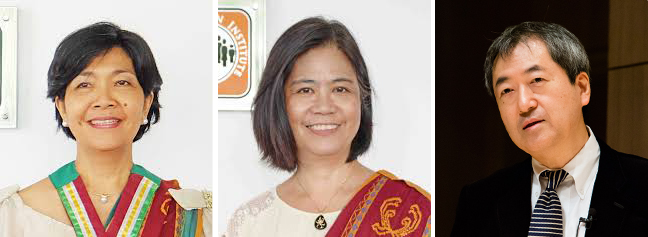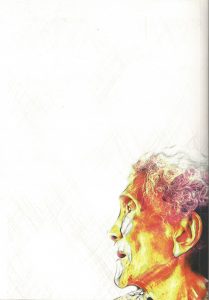
(AUG. 22)—Older Filipinos are generally not materially well-off, not well-educated and about half consider themselves to be of average health, but have poor use of health services. They also believe that it would be best living by themselves. Older people are aged 60 and above.
These were some of the findings of the research “Aging in the Philippines: Findings from the 2007 Philippine Study on Aging (PSOA)” by Grace T. Cruz, Josefina N. Natividad, Melissa L. Gonzales and Yasuhiko Saito.
Economic well-being. The research, considered the second nationally representative survey of older Filipinos, revealed that older Filipinos, aged 60 and above have low income and low assets.
Many continue to work well beyond the retirement average age. The compulsory retirement age for those in government service is 65, while those in the private sector is usually at 60. About four in 10 respondents said their household income is just enough for them to pay expenses with no difficulty.
The three most common sources of income for older Filipinos are money from children within the country, income from a family business or farm and earnings from work. Income from pension was only mentioned by 22 percent of older Filipino respondents which indicate a “low reliance on the formal support system in old age,” the study stated.
Interestingly, the most common source of major income mentioned is from work, with more men respondents aged 60 to 69, “and more of the currently married mentioned this as their most important income source.”
Of their possessions, the senior respondents rank house as their most common asset owned. “Only 6 percent have bank accounts, 12 percent have cash, and 11 percent have real estate. In addition, 15 percent of the older person have liabilities.”
Education. The study revealed that older Filipinos have a relatively poor educational profile. Of the 1,305 respondents from Sultan Kudarat, Laguna, Bulacan, Negros Occidental, Iloilo, Eastern Samar and the National Capital Region (NCR), two in three received, at most only an elementary education.
Health and care. About half of older Filipinos consider themselves to be of average health, but report functional disability and with illness like arthritis, rheumatism, high blood pressure, chronic back pain and cataracts.
The study also revealed that about one in four older Filipinos are depressed, comprising those in the oldest age group, the not currently married and those with no formal schooling with women having a higher proportion.
According to the study, 15 percent of older people have difficulty performing at least one activity of daily living (ADL) while 19 percent have difficulty performing at least one instrumental activity of daily living (IADL).
The ADL activities “that the highest proportion of the sample have difficulty performing are standing up from a bed/chair (10%) and going outside/leaving the house (10%).” Meanwhile, of IADL, “taking public transportation (jeep/bus) to leave the house was reported by the highest proportion of respondents as difficult to perform. For both ADLs and IADLs, significantly higher proportions of females, the older cohort, those not currently married and those with no formal schooling reported difficulty performing at least one activity.”
The research also showed that a considerable part of the senior’s life is “lived in an inactive state, with a significant gender disparity.”
“Females have an advantage in terms of the number of remaining years lived, but they experience more years and a relatively greater proportion of their remaining life in disability compared with the males,” the study stated.
Older Filipinos also have poor use of their health services. Only 15 percent have health insurance, mostly PhilHealth. “Half of the college educated have health insurance coverage compared with only 4 percent among the least educated.”
Seniors mainly rely on family for their informal care, with mostly their children identified as caregivers in times of illness (48%), followed by their spouse (35%). Usually, it is the spouse who care for the men, while it is the children for the women.
 Living with children. PSOA findings show seven in 10 older Filipinos live with a child/children. More men, the younger older persons, the currently married and those with higher education—live with unmarried children. Meanwhile more women, the older persons, the not currently married and those with lower education live with married children. Also, more women than men live alone.
Living with children. PSOA findings show seven in 10 older Filipinos live with a child/children. More men, the younger older persons, the currently married and those with higher education—live with unmarried children. Meanwhile more women, the older persons, the not currently married and those with lower education live with married children. Also, more women than men live alone.
The study also revealed that older people give equal support in the care of grandchildren regardless of their living arrangement with their children.
According to the study, “the actual living arrangements do not coincide with the respondents’ perceived best living arrangements. Respondents believe that it would be best for older couples to either live by themselves or to live by themselves but near one or more children. For those who said the best living arrangements for an older person is to live with a child, there is a bias toward living with a daughter.”
Also, eight in 10 older Filipinos consider the idea of having homes for the aged in the Philippines, although only two in 10 would want to live in them.
Need for continued study of old people. The study also revealed the need for continued study of this segment of the population “as the findings will help inform policy making and the creation of programs for older persons that are more attuned to reality. Policy making about older Filipinos should be evidence based to avoid possible costly mistakes.” One example is the proposal for lowering or increasing the retirement age in the country.
The authors, in their study said, “Ensuring human development among the older people means enlarging their choices and expanding the opportunities available to them.”
2007 PSOA. The 2007 PSOA is the second nationally representative survey of older Filipinos and the study aims to know their health status and well-being. It is the first survey on a nationally representative sample of Filipino older people to gather anthropometric data, and was designed to be the first wave of a “longitudinal study on aging in the Philippines that is comparable to the Nihon University Japanese Longitudinal Study of Aging.
It is a collaborative study of the University of the Philippines Diliman Population Institute (UPPopI) and the Nihon University Population Research Institute.
The study differentiated on four specific factors: age, sex, marital status and education.
The 2007 PSOA has been an important data source for various reports that initiated discussions on the various issues and concerns of the older people and have since generated important conclusions and recommendations.
The survey expanded and updated the methodology and data of the 1996 Philippine Elderly Survey, the first nationally representative study on older Filipino. This is a collaborative effort of the UP Population Institute and the Nihon University Population Research Institute
New information collected include anthropometric measures such as blood pressure, grip strength and other dimensions of health. Methodological innovations were also introduced including the collection of data on vignettes and respondents’ facial photographs that hope to unveil a deeper understanding of the issues and concerns of older people.
